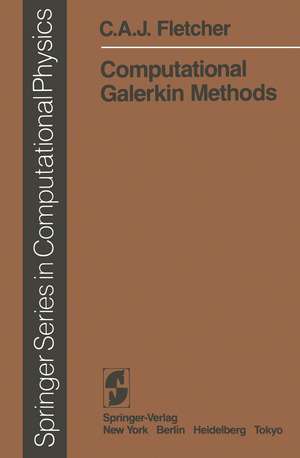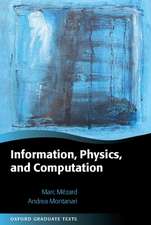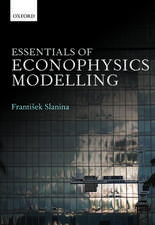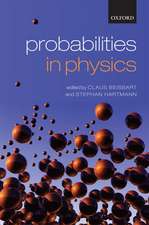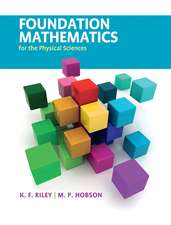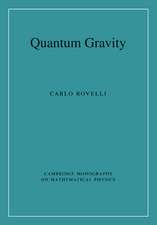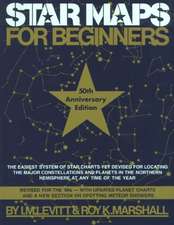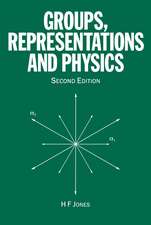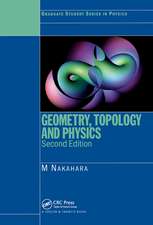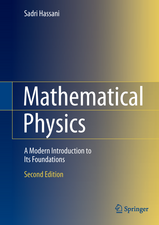Computational Galerkin Methods: Scientific Computation
Autor C. A. J. Fletcheren Limba Engleză Paperback – 13 iun 2012
Din seria Scientific Computation
- 18%
 Preț: 1021.05 lei
Preț: 1021.05 lei - 18%
 Preț: 743.27 lei
Preț: 743.27 lei - 18%
 Preț: 889.75 lei
Preț: 889.75 lei - 18%
 Preț: 1108.51 lei
Preț: 1108.51 lei -
 Preț: 387.96 lei
Preț: 387.96 lei - 20%
 Preț: 902.04 lei
Preț: 902.04 lei -
 Preț: 400.85 lei
Preț: 400.85 lei -
 Preț: 386.61 lei
Preț: 386.61 lei - 15%
 Preț: 654.62 lei
Preț: 654.62 lei -
 Preț: 380.25 lei
Preț: 380.25 lei - 18%
 Preț: 1111.34 lei
Preț: 1111.34 lei -
 Preț: 452.62 lei
Preț: 452.62 lei -
 Preț: 389.31 lei
Preț: 389.31 lei - 18%
 Preț: 950.03 lei
Preț: 950.03 lei - 15%
 Preț: 649.22 lei
Preț: 649.22 lei - 18%
 Preț: 787.26 lei
Preț: 787.26 lei - 18%
 Preț: 942.63 lei
Preț: 942.63 lei - 15%
 Preț: 505.18 lei
Preț: 505.18 lei -
 Preț: 389.70 lei
Preț: 389.70 lei - 15%
 Preț: 653.00 lei
Preț: 653.00 lei - 18%
 Preț: 957.44 lei
Preț: 957.44 lei - 15%
 Preț: 653.98 lei
Preț: 653.98 lei - 15%
 Preț: 643.99 lei
Preț: 643.99 lei - 15%
 Preț: 649.39 lei
Preț: 649.39 lei -
 Preț: 388.13 lei
Preț: 388.13 lei - 18%
 Preț: 958.38 lei
Preț: 958.38 lei - 18%
 Preț: 1129.52 lei
Preț: 1129.52 lei - 18%
 Preț: 967.56 lei
Preț: 967.56 lei - 15%
 Preț: 700.75 lei
Preț: 700.75 lei -
 Preț: 401.03 lei
Preț: 401.03 lei - 15%
 Preț: 597.99 lei
Preț: 597.99 lei -
 Preț: 385.62 lei
Preț: 385.62 lei -
 Preț: 394.87 lei
Preț: 394.87 lei -
 Preț: 385.08 lei
Preț: 385.08 lei - 18%
 Preț: 1106.63 lei
Preț: 1106.63 lei - 15%
 Preț: 504.17 lei
Preț: 504.17 lei - 15%
 Preț: 596.36 lei
Preț: 596.36 lei - 15%
 Preț: 653.98 lei
Preț: 653.98 lei
Preț: 585.40 lei
Preț vechi: 688.71 lei
-15% Nou
Puncte Express: 878
Preț estimativ în valută:
112.03€ • 121.65$ • 94.10£
112.03€ • 121.65$ • 94.10£
Carte tipărită la comandă
Livrare economică 22 aprilie-06 mai
Preluare comenzi: 021 569.72.76
Specificații
ISBN-13: 9783642859519
ISBN-10: 3642859518
Pagini: 324
Ilustrații: XII, 310 p. 102 illus.
Dimensiuni: 155 x 235 x 25 mm
Greutate: 0.46 kg
Ediția:Softcover reprint of the original 1st ed. 1984
Editura: Springer Berlin, Heidelberg
Colecția Springer
Seria Scientific Computation
Locul publicării:Berlin, Heidelberg, Germany
ISBN-10: 3642859518
Pagini: 324
Ilustrații: XII, 310 p. 102 illus.
Dimensiuni: 155 x 235 x 25 mm
Greutate: 0.46 kg
Ediția:Softcover reprint of the original 1st ed. 1984
Editura: Springer Berlin, Heidelberg
Colecția Springer
Seria Scientific Computation
Locul publicării:Berlin, Heidelberg, Germany
Public țintă
ResearchCuprins
1. Traditional Galerkin Methods.- 1.1 Introduction.- 1.2 Simple Examples.- 1.3 Method of Weighted Residuals.- 1.4 Connection with Other Methods.- 1.5 Theoretical Properties.- 1.6 Applications.- 1.7 Closure.- References.- 2. Computational Galerkin Methods.- 2.1 Limitations of the Traditional Galerkin Method.- 2.2 Solution for Nodal Unknowns.- 2.3 Use of Low-order Test and Trial Functions.- 2.4 Use of Finite Elements to Handle Complex Geometry.- 2.5 Use of Orthogonal Test and Trial Functions.- 2.6 Evaluation of Nonlinear Terms in Physical Space.- 2.7 Advantages of Computational Galerkin Methods.- 2.8 Closure.- References.- 3. Galerkin Finite-Element Methods.- 3.1 Trial Functions and Finite Elements.- 3.2 Examples.- 3.3 Connection with Finite-Difference Formulae.- 3.4 Theoretical Properties.- 3.5 Applications.- 3.6 Closure.- References.- 4. Advanced Galerkin Finite-Element Techniques.- 4.1 Time Splitting.- 4.2 Least-squares Residual Fitting.- 4.3 Special Trial Functions.- 4.4 Integral Equations.- 4.5 Closure.- References.- 5. Spectral Methods.- 5.1 Choice of Trial Functions.- 5.2 Examples.- 5.3 Techniques for Improved Efficiency.- 5.4 Alternative Spectral Methods.- 5.5 Orthonormal Method of Integral Relations.- 5.6 Applications.- 5.7 Closure.- References.- 6. Comparison of Finite Difference, Finite Element and Spectral Methods.- 6.1 Problems and Partial Differential Equations.- 6.2 Boundary Conditions and Complex Boundary Geometry.- 6.3 Computational Efficiency.- 6.4 Ease of Coding and Flexibility.- 6.5 Test Cases.- 6.6 Closure.- References.- 7. Generalized Galerkin Methods.- 7.1 A Motivation.- 7.2 Theoretical Background.- 7.3 Steady Convection-Diffusion Problems.- 7.4 Parabolic Problems.- 7.5 Hyperbolic Problems.- 7.6 Closure.- References.- Appendix 1 Program BURG1.- Appendix 2 Program BURG4.
